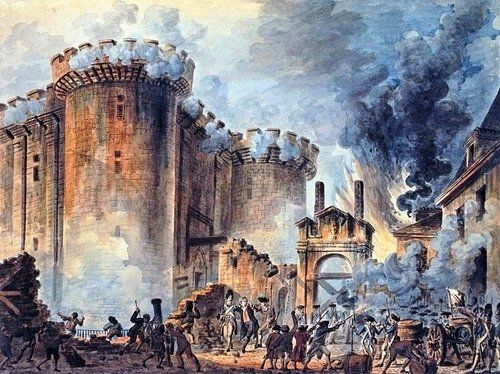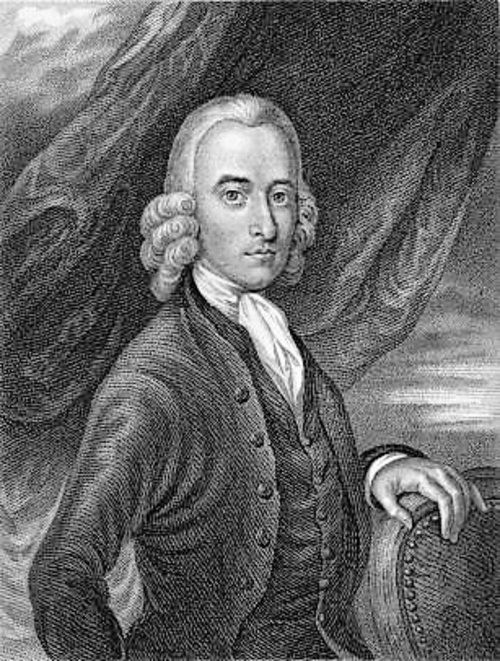Link to Article 1
Link to Article 3
Noble as the ideal of evangelical union was; and hard as the Haldanes worked during the late eighteenth and early nineteenth centuries, to see it realised; in the end they failed.
This was a time when the Dissenters in England were agitating for their civil liberties. In 1828 the Test and Corporations Acts were repealed, but that was only the beginning of a long process of redressing English Nonconformist grievances.
Independent churches on the borderland of the Church of England and Dissent became more distinctively Congregationalist, as did such interdenominational agencies as the London Missionary Society, Village Itinerancy Society and Home Missionary Society.
In Scotland, Dissenters challenged the advocates of the establishment principle in what became known as the Voluntary Controversy. In both England and Scotland, clergy in the established churches responded to this recrudescence of Nonconformity by reaffirming their own distinctive principles.
It was noted at the time that Anglican evangelical clergymen were distancing themselves from their Dissenting brethren. It was not until the founding of the Evangelical Alliance in 1841 that a measure of cordiality was restored to relationships between evangelicals inside and outside the established churches.
But the unity promoted by the Alliance was both more modest and negative than that of a few decades before. It was more modest in that it did not seek the visible union of churches, and it was more negative because it was reactive to the growing threat of Roman and Anglican Catholicism.
The Haldanes were not immune to these developments. There are four areas where we can see tensions that led to the failure of their dream of evangelical union being realised.

Political tensions
In spite of sharing so much in common theologically and spiritually, many British evangelicals were divided on politics. In the early 1790s they had very differing views on the French Revolution. Someone like David Bogue initially welcomed the Revolution as a great boost for religious as well as political liberty, as did Robert Haldane.
Anglican evangelicals, and to a lesser extent Church of Scotland evangelicals, saw the French Revolution and radical politics as deeply subversive to the established order of which they were a part.
Writing to William Wilberforce in 1792, Thomas Robinson, vicar of St Mary’s, Leicester, said: ‘I am sorry to observe that among the numerous class of dissenters whose aim is to abolish every national establishment of religion among us, there are many of real piety. I know not how they can reconcile their conduct with the Scripture injunction to obey the magistrates and follow after peace … They seem to think, that while they are opposing our Church, they are doing God service and promoting the cause of his truth’.
Even the revered John Newton, who had many close Nonconformist friends, among them the Haldanes, thought that ‘all the Dissenters, even the orthodox not excepted, are republicans and enemies of government’.
Not surprisingly, many evangelical Anglicans were somewhat wary of associating too closely with Dissenters in panevangelical enterprises. Later in the 1820s and 30s, when the established position of the Church of England and the Church of Scotland was being challenged, political tensions again undermined evangelical union.
The Haldane brothers, particularly Robert, were affected by the climate of political suspicion. Before his conversion Robert Haldane had flirted with radical politics, but after his conversion it seems that what political views he held were kept to himself. However, this did not prevent his opponents from using his former radicalism against him.
When, with his brother, he applied to the East India Company for permission to go to India as missionaries, his politics were one of the reasons his application was rejected. At the time it was feared that missionaries were subversive to civil order.
It was against this background that Robert Haldane sought to answer his critics by protesting that he had never entertained the idea of subverting the established church, and by avowing his submission to the state as commanded by Scripture.
While evangelicals within the established churches supported the right of the Haldanes and others to engage in itinerant preaching, some were nervous about their politics and less than enthusiastic in their co-operation.
Ecclesiastical tensions
It was in the realm of church life that the Haldanes’ attempt to realise evangelical union came to nought. In spite of their desire to establish churches that were simply evangelical and non-denominational, the Haldanes ended up establishing a new denomination and dividing their own church.
The problem was that, as they sought to make the church as biblical as they could, they inevitably alienated those who disagreed with them. What they saw as a sincere pursuit of an apostolic ideal of church life was seen by others as a restless love of novelty and innovation for its own sake.
When the Circus Church was established in Edinburgh in 1799 (see ET, July 2018), its pattern of church life was similar to that with which most Scots were familiar. As minister, James Haldane’s position in the church was comparable to that of minister in Presbyterian churches. The church was Congregational in polity for largely, but not entirely, pragmatic reasons. (It moved in 1801 to a purpose-built Tabernacle on Leith Walk that seated 3,000 people).
At this point there is not much evidence that the Haldanes had distinct views on church polity, except that they, with the other organisers, were concerned that the new church take church discipline seriously. One of the lessons learned from their itinerant tours around Scotland seems to have been that discipline was too lax in the Church of Scotland.
Other than that, and the monthly observance of the Lord’s Supper, the Circus Church was not all that unusual; it was basically intended to be an Edinburgh version of the Whitefieldian churches in England. But the seeds of a more distinctive church polity had been planted and in time would begin to grow.

Distinct differences
The first area in which James Haldane began to develop a more distinct ecclesiology was in relation to the Lord’s Supper. By 1802 he was advocating the weekly observance of the Lord’s Supper. Considering that at the time, in Scotland, the Lord’s Supper was observed in many churches only annually, this was quite an innovation.
A further development in James’ thinking that proved more divisive was in regard to eldership. Influenced by reading the works of the eighteenth-century separatists John Glas and Robert Sandeman, James persuaded the church, in 1806, to adopt a plural eldership.
These elders were understood not to be ruling elders in the Presbyterian sense, but rather fellow pastors with James. This innovation was not appreciated by many, and it was noted ruefully by some critics that, when James was not preaching, the attendance dropped considerably.
But these developments were relatively minor compared to what happened over the issues of mutual exhortation and believers’ baptism. In 1808 James had come to the conclusion that Christians should have opportunity in the regular worship meetings of the church to mutually exhort one another.
Until then there had been mutual exhortation in some midweek meetings, but its introduction into Sunday services caused a storm. Many people left the church over this. Many of those who stayed often considered what was said unedifying. But James was adamant.
His convictions on mutual exhortation were closely related to his views on preaching and Christian ministry. Having repudiated the clergy/laity distinction he believed that every member of the church, or at least the male members, should have opportunity to speak for the edification of other members. In this way, those who had a particular gift for preaching could be recognised and set apart for training and ministry.
Many of the Haldanes’ associates who disagreed with them on this issue considered it, in the words of one of them (John Aikman), ‘destructive, both of the pastoral office and of all order in the house of God’. If that is how some in the Haldane circle felt, it is not difficult to think what fellow evangelicals in the Presbyterian churches felt.
Believers’ baptism
And it was the issue of believers’ baptism that finally split the Haldane movement and destroyed any pretence of evangelical union. Hard on the heels of the mutual exhortation controversy was first James’ and then Robert’s change of view on baptism.
In a letter to his friend John Campbell, the minister successively of Whitefield’s Tottenham Court Road Chapel and Kingsland Chapel in London, James confessed to having for some time entertained doubts about infant baptism. It was when asked to baptise a child in 1808 that he felt he could not conscientiously do so, even though he had not at that point come to clear conclusions.
James did not want the issue of baptism to divide the church, but in fact it did. About 200 people agreed with James and stayed with him, while many others departed to other churches.
The division at the Tabernacle spread through the Haldane movement, with most churches choosing to maintain the practice of infant baptism. This was in effect the beginning of the Congregational denomination in Scotland.
To be concluded
Dr Kenneth Brownell is minister of ELT Baptist Church, Mile End. This article is edited and used with permission from Foundations, the journal of Affinity (http://www.affinity.org.uk/downloads/foundations/Foundations%20Archive/46_03.pdf).






